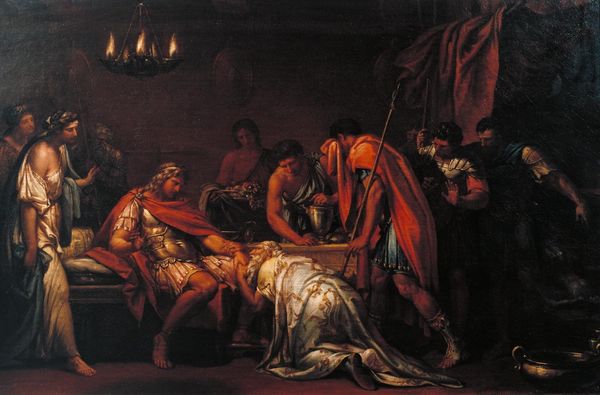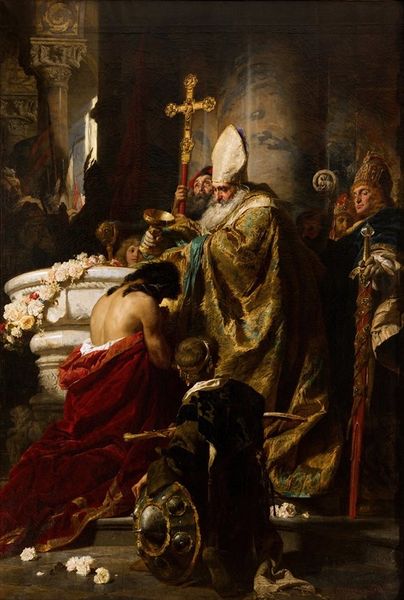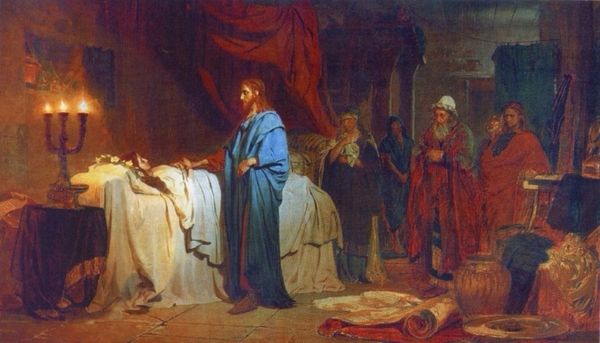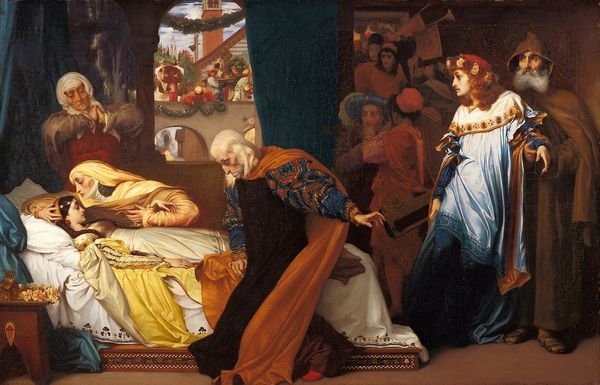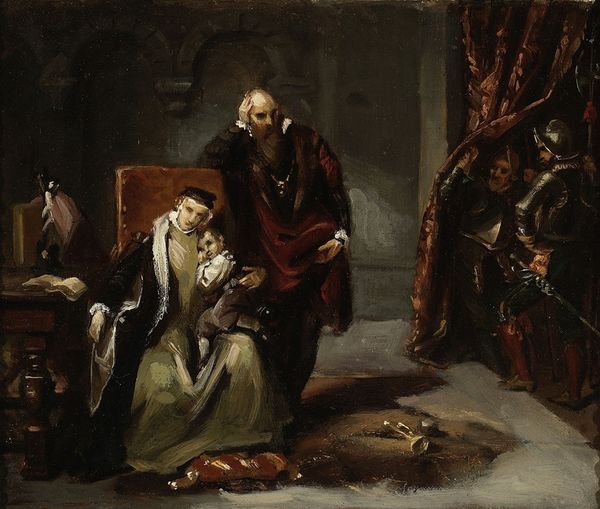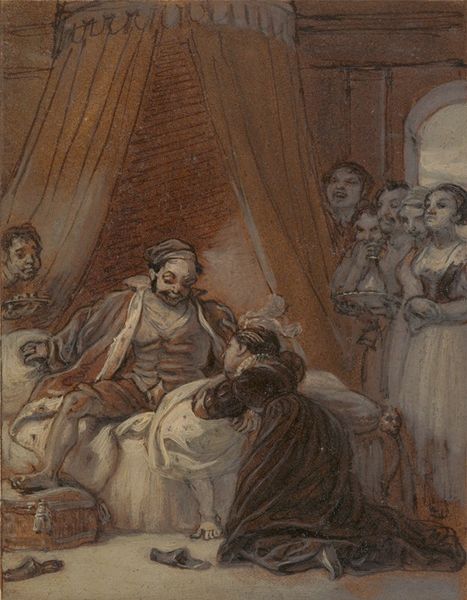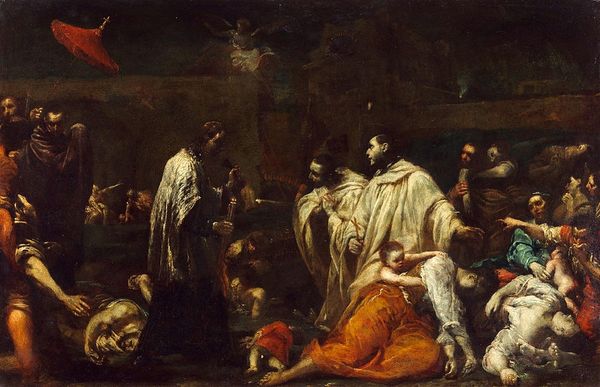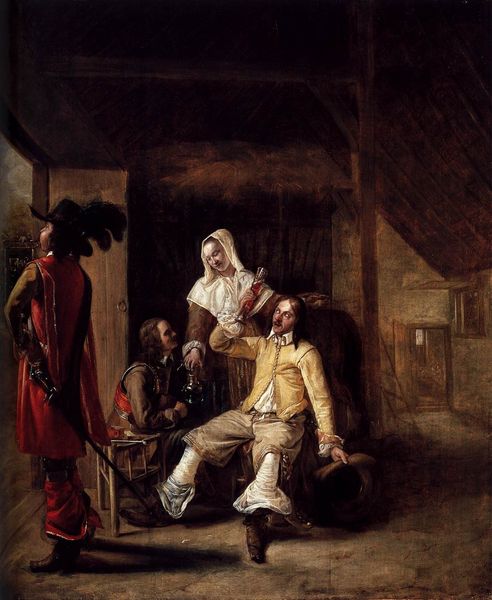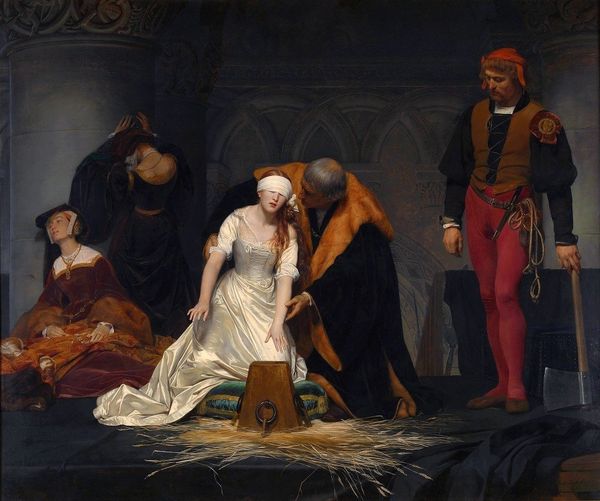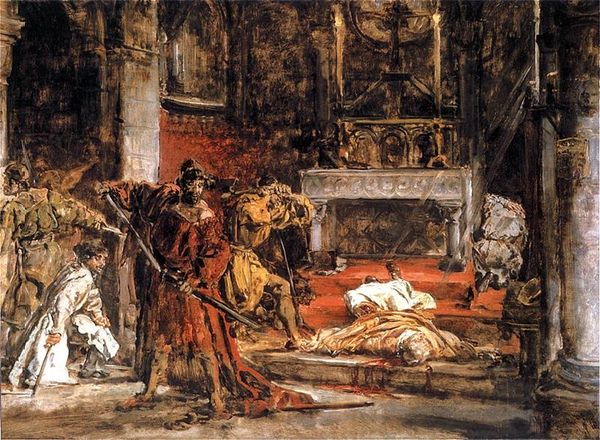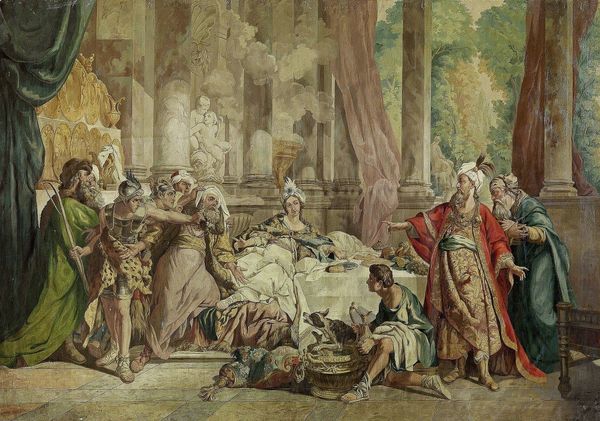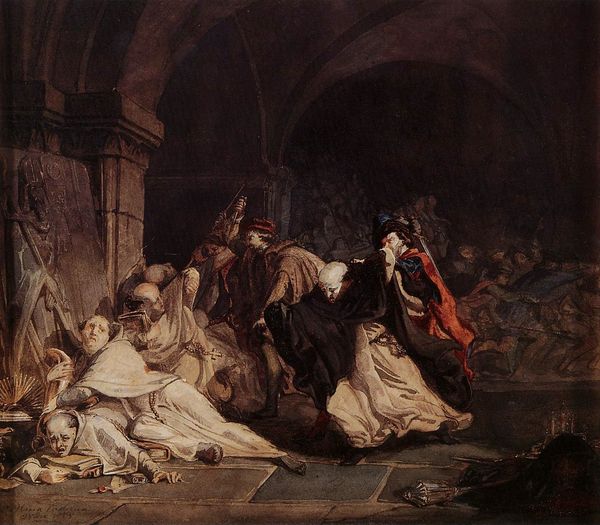
painting, oil-paint
#
portrait
#
narrative-art
#
painting
#
oil-paint
#
figuration
#
dark-toned
#
costume
#
romanticism
#
history-painting
Copyright: Public domain
Curator: This compelling oil on canvas is titled "Death of Elizabeth I, Queen of England" by Paul Delaroche, created in 1828. It currently resides here in the Louvre. Editor: My first impression is one of stark drama. The high contrast between the brightly lit deathbed and the surrounding darkness really focuses my attention. Curator: Absolutely. Delaroche captures the historical weight and political significance of Elizabeth's passing. Notice the women in waiting, their emotional display reflecting societal constraints on female expression in mourning versus the men standing stoically behind them. Consider too that this painting emerged during a period of renewed interest in Romanticized historical narrative. Editor: Indeed, the composition guides our eye from the opulent fabrics of her gown to the concerned faces gathered around. I am intrigued by how the artist uses diagonal lines created by the bodies and gaze of figures to express a kind of chaotic tension while remaining ordered and stable. How would you describe the use of colour here? Curator: The crimson reds of the royal clothing is so significant, not merely for richness, but as potent symbol of authority and bloodlines amidst succession anxieties that underscored Elizabeth’s legacy and her reign. As a powerful female leader in a male-dominated world, Elizabeth's identity was constantly under scrutiny and fiercely debated. The colours are reflective of the anxieties that existed at the time around the queen. Editor: You can certainly discern a meticulous observation of textures here - from the furs and silks to the smooth pallor of Elizabeth’s face, contributing to the realism characteristic of its time, yet amplified with dramatic lighting. Curator: Precisely, reflecting how even something like an oil painting can reflect the dynamics of power, identity, and grief within a specific moment. Editor: It offers a compelling example of how the formal aspects of painting underscore and contribute to wider historical contexts. Curator: It is certainly a testament to the artist's ability to make tangible a historical shift and a compelling moment of mortality.
Comments
No comments
Be the first to comment and join the conversation on the ultimate creative platform.
